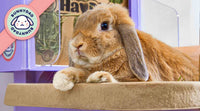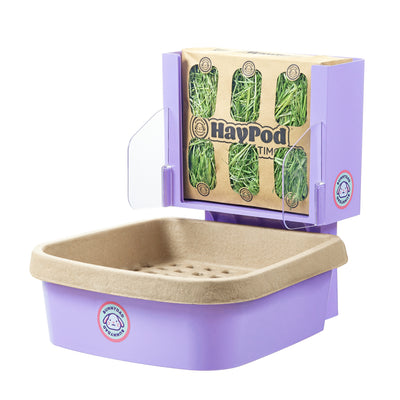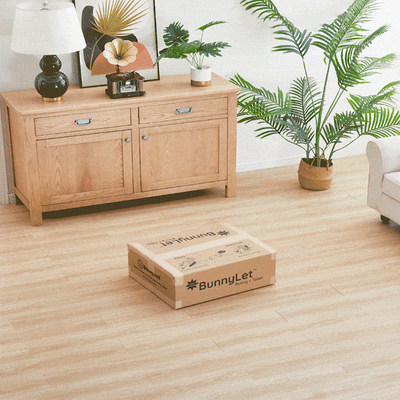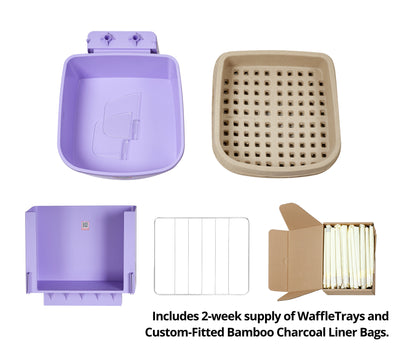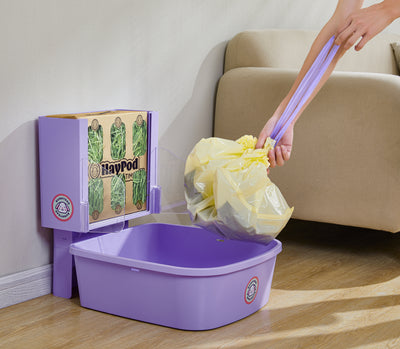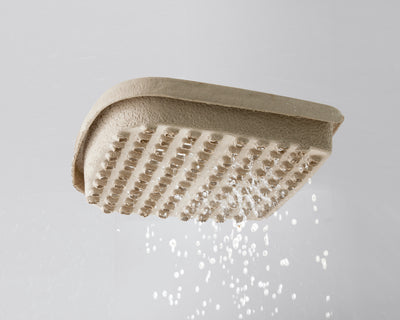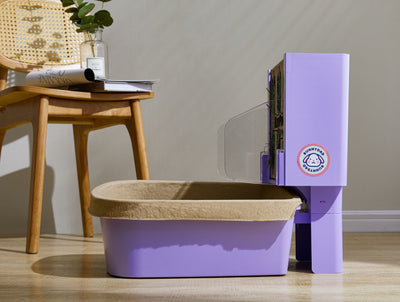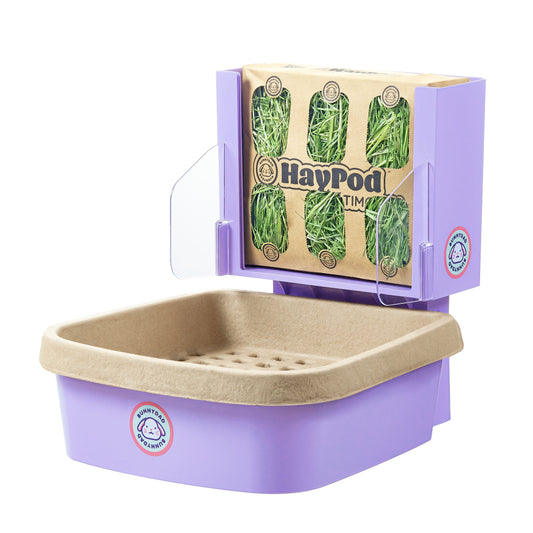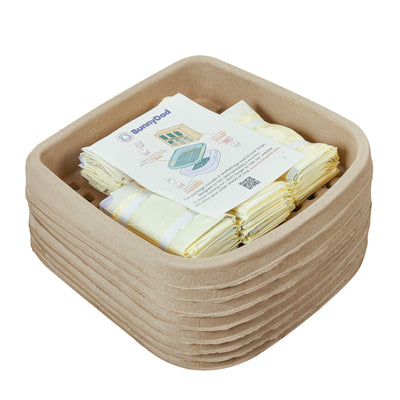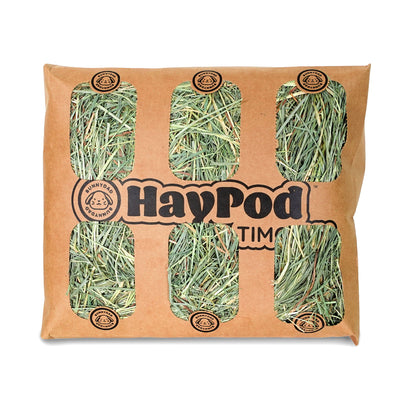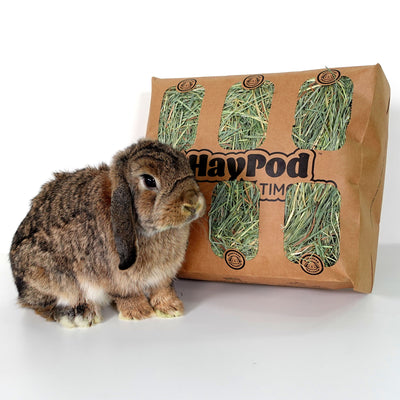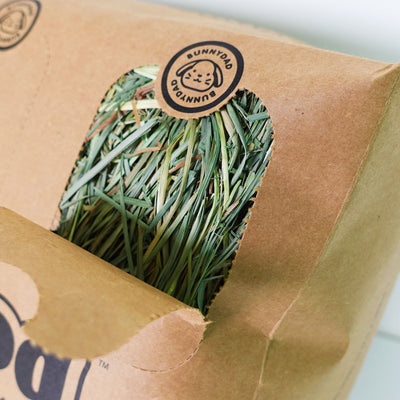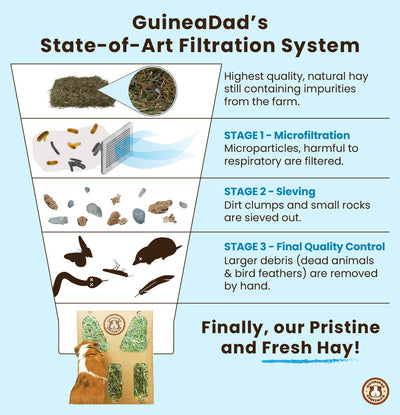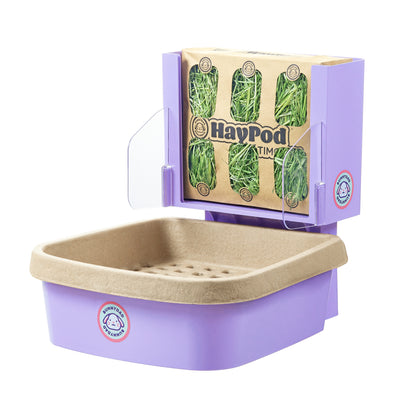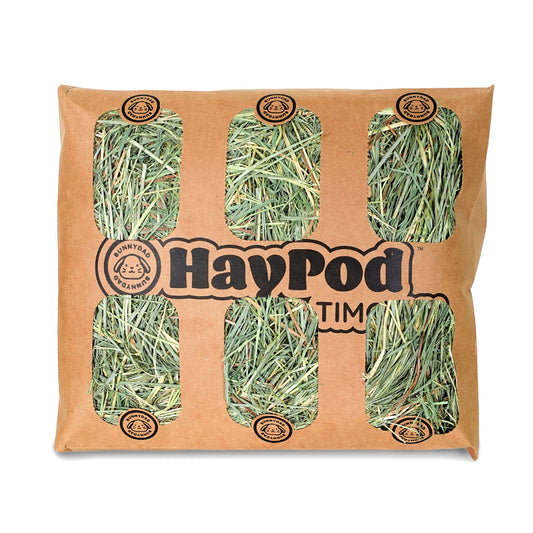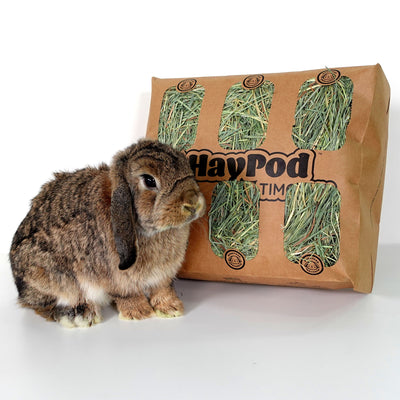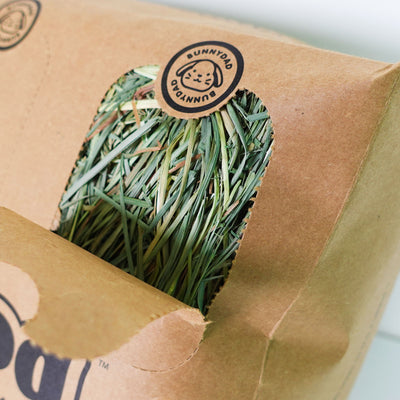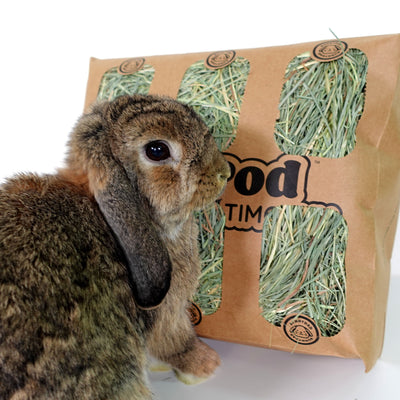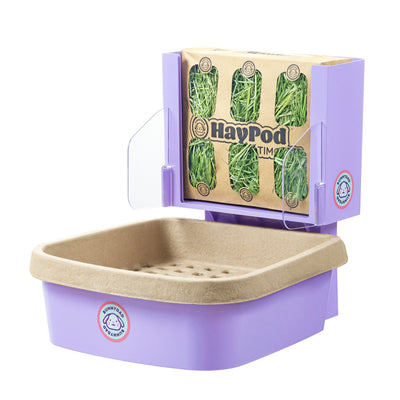Monitoring Your Pet Rabbit's Health Through Their Poop
One of our most important duties as responsible pet owners is keeping a close eye on our furry friends’ health. Quick, daily check-ins to make sure that everything is working the way that it should is paramount in ensuring long, happy lives for our furry family members. One often-overlooked but highly informative aspect of your rabbit's well-being is the quality of its poop. Rabbit feces can provide valuable insights into their overall health, diet, and potential underlying issues. In this article, we will explore the significance of monitoring your pet rabbit's health through their poop and understanding what different types of droppings may indicate.
Normal Rabbit Poop:
Before delving into the details of diagnosing a problem, it's necessary to know what healthy rabbit poop looks like. Rabbit droppings consist of two distinct types: fecal pellets and cecotropes (night feces).
-
Fecal Pellets: These are small, round, dry, and dark brown or black in color. They should be consistently produced throughout the day and should not stick to your rabbit's fur.

- Cecotropes: These are softer, shiny, and usually lighter in color, often resembling clusters of grapes or mulberries. Rabbits typically consume their cecotropes directly from their anus. They are rich in nutrients that your bunny’s body wasn’t able to fully break down and absorb the first time through, and eating them is vital for your rabbit's health. This is another reason it’s important to never keep your rabbit in a wire-bottom cage (in addition to all the foot and hock issues they cause), as these cages can keep rabbits from being able to reach any cecotropes that may have fallen through the grates.
Examining Your Rabbit's Poop:
-
Consistency and Regularity: One of the easiest ways to monitor your rabbit's health is by observing the consistency and regularity of their poop. Healthy rabbits should have consistently formed fecal pellets, and they should produce them regularly throughout the day. A sudden change in the frequency or consistency of fecal pellets can be a sign of a problem.
-
Foul Odor: Rabbit poop usually doesn't have a strong odor. However, if you notice an unusually foul smell, it could indicate a digestive issue or an improper diet.
-
Size and Color: Pay attention to the size and color of your rabbit's feces. Large, soft, or discolored fecal pellets may be signs of gastrointestinal problems. If you see blood in the poop, seek immediate veterinary attention.
-
Cecotropes: Monitoring your rabbit's consumption of cecotropes is essential. If your rabbit is not eating cecotropes, it may indicate an issue with their diet or digestive system. Conversely, if they have cecotropes stuck to their fur, it could be due to obesity or mobility issues.

Changes in Diet: Any change in your rabbit's diet should be reflected in their poop. Gradual dietary changes are less likely to upset their stomach and poop quality. Sudden changes can lead to gastrointestinal upset.
Common Health Issues Revealed Through Poop:
-
GI Stasis: Gastrointestinal stasis is a severe condition in rabbits where their digestive system slows down or stops entirely. Soft or no fecal pellets, accompanied by lethargy and loss of appetite, can be indicators of this condition.
-
Parasites: Presence of worms or other parasites in the poop can be a sign of an infestation. Your vet can perform tests to diagnose and treat these issues.
-
Dietary Imbalance: An unbalanced diet can lead to abnormal fecal consistency and color. Too much sugary or starchy food can cause soft poop, while a diet lacking in fiber can lead to small, hard pellets.
- Infections or Diseases: Certain infections or underlying diseases can manifest in changes in feces. Any sudden or severe deviation from normal should prompt a vet visit.
Vigilantly monitoring your rabbit's poop is one of the best methods of managing their health. Looking out for any changes in color, consistency, or other abnormalities in their feces can help you detect health issues early, ensuring prompt veterinary care and a better chance of resolving problems effectively.
Remember that any noticeable changes in your rabbit's poop should be discussed with a veterinarian, as they can provide professional guidance and ensure your furry friend leads a happy, healthy life.
If you do notice an abnormality and something in your rabbit’s diet has recently changed, in addition to speaking with your vet, attempt to isolate and remove the food that’s caused the disturbance in their diet. As bunnies can have very sensitive digestive systems, food allergies and sensitivities are quite common. After isolating and removing the problematic food, give your bunny’s digestive system a week or two to fully return to normal before experimenting with alternative additions to their diet. When doing so, start with small, gradual portions of the new food, mixed in with their regular foods and monitor them closely. If the food that seems to be disagreeing with them is a staple of their diet, like Timothy hay, or rabbit food pellets, you can try introducing different types of hay like Orchard hay (which is known to cause diminished allergic responses to humans with hay allergies), or alternative brands of food pellets. When you find the staples that are right for you and your rabbit, find a good local source or online store and write the name or website down in your poop journal! Signing up for an Autoship program (automatically recurring deliveries) can help you make sure that you’ll never run out of the foods and brands that keep your furry friend feeling their best.
For Your Review:
Healthy Rabbit Poop:
Consistency: Healthy rabbit fecal pellets are firm, compact, and well-formed. They should be dry and not overly moist or sticky.
Color: Healthy rabbit feces are typically dark brown or black, with a consistent color throughout the pellets.
Shape and Size: The fecal pellets are small, round, and uniform in size. They resemble tiny marbles.
Odor: Healthy rabbit poop does not have a strong or offensive odor. It may have a mild, earthy smell.
Frequency: Rabbits should produce fecal pellets regularly throughout the day. It's common for them to leave small droppings in their living area.
Absence of Blood or Mucus: Healthy rabbit poop should not contain any traces of blood, mucus, or unusual substances.
Unhealthy Rabbit Poop:
Consistency: Unhealthy rabbit feces can vary in consistency. Common deviations include overly soft or runny stools, which can indicate a problem with digestion or hydration.
Color: Any significant change in color, such as very pale or greenish feces, may signal a dietary issue or underlying health problem.
Shape and Size: Abnormal feces may be irregular in shape, excessively large, or small and deformed. In some cases, they may clump together.
Odor: An unusually foul or pungent odor can be a sign of gastrointestinal distress or an improper diet.
Frequency: A decrease in the frequency of fecal pellet production can be a sign of gastrointestinal stasis, a serious condition where the digestive system slows down or stops.
Presence of Foreign Objects: If you notice non-food items, such as plastic, in your rabbit's feces, it could indicate that they have ingested something they shouldn't have.
Blood or Mucus: The presence of blood or mucus in the poop can be indicative of various health issues, including infections, parasites, or intestinal problems.
Cecotrope Issues: If your rabbit is not consuming its cecotropes (soft, nutrient-rich night feces), or if they have them stuck to their fur, it could be a sign of diet-related problems or obesity.

What to Look For:
Consistency Changes: Keep an eye out for any sudden changes in the consistency of your rabbit's poop. Diarrhea or excessively soft stools should be addressed promptly.
Color Variations: Notice any shifts in color, especially if it becomes consistently lighter or darker than usual.
Abnormal Shapes and Sizes: Irregularly shaped or unusually large or small fecal pellets may warrant investigation.
Foul Odor: If your rabbit's feces suddenly start smelling worse than usual, it's a cause for concern. This can be a symptom of many underlying health concerns, but most commonly occurs when a food is disagreeing with them.
Blood, Mucus, or Foreign Objects: The presence of blood, mucus, or non-food items in the poop is a red flag. Make an appointment to see your vet.
Changes in Cecotrope Consumption: Ensure your rabbit is eating their cecotropes regularly. If they're not, it could indicate some dietary or health problems.
Reduced Frequency: If your rabbit stops producing fecal pellets regularly, consult a veterinarian immediately.
Creating a simple poop chart to monitor the health of your pet rabbit is a practical and easy way to keep track of changes in their digestive functioning, and consequently, their overall health and well-being. Paired with regular grooming and physical inspections, monitoring your rabbit’s digestive functioning is the best way to ensure that your pet stays feeling their best.
Here's a simple poop chart template that you can use:
-------------------------------------------------------------------------
| Date | Poop Color | Consistency | Quantity | Notes or Concerns |
-------------------------------------------------------------------------
| Date | Poop Color | Consistency | Quantity | Notes or Concerns |
-------------------------------------------------------------------------
| Date | Poop Color | Consistency | Quantity | Notes or Concerns |
-------------------------------------------------------------------------
| Date | Poop Color | Consistency | Quantity | Notes or Concerns |
-------------------------------------------------------------------------
| Date | Poop Color | Consistency | Quantity | Notes or Concerns |
-------------------------------------------------------------------------
| Date | Poop Color | Consistency | Quantity | Notes or Concerns |
-------------------------------------------------------------------------
Instructions:
Date: Record the date of each observation. This will help you track changes over time.
Poop Color: Note the color of your rabbit's feces. Healthy rabbit poop is typically dark brown or black.
Poop Consistency: Describe the consistency of the feces. Healthy rabbit fecal pellets are firm and well-formed.
Additional Notes or Concerns: Use this section to jot down any additional observations or concerns you may have. For example, if you notice a sudden change in poop color or consistency, record it here. Any other unusual behavior or symptoms can also be noted.
Tips:
Regular Monitoring:
Make it a habit to check your rabbit's poop daily or as frequently as needed.
Consult a Vet:
If you notice consistent changes in color or consistency, the presence of blood or mucus, or if your rabbit stops producing fecal pellets altogether, consult your veterinarian promptly.
Diet and Hydration:
Remember that a rabbit's diet and hydration can significantly affect their poop. Ensure they have a proper diet with sufficient fiber and fresh water.
Clean Environment:
Keep your rabbit's living space clean and hygienic to prevent potential health issues.
Share with the Vet:
When visiting your vet, bring your poop chart along. It can provide valuable information for diagnosis and treatment.
Keeping a detailed and consistent poop chart can be an invaluable tool for rabbit owners in detecting early signs of health issues that arise, and ensuring the speediest possible treatments and solutions for their rabbits. A detailed poop chart is a great resource to be able to show to your vet, should any questions or abnormalities arise. Your rabbit will be grateful for you expediting their recovery, your vet will appreciate you making it easier for them to diagnose the problem, and you’ll be glad to finally have someone to talk to who’s as interested in your rabbit’s poo as you are.
Thanks for reading, BunnyGang! We hope this guide helps you and your bunnies continue living your lives to the fullest! Catch you soon!
~ BunnyDad






